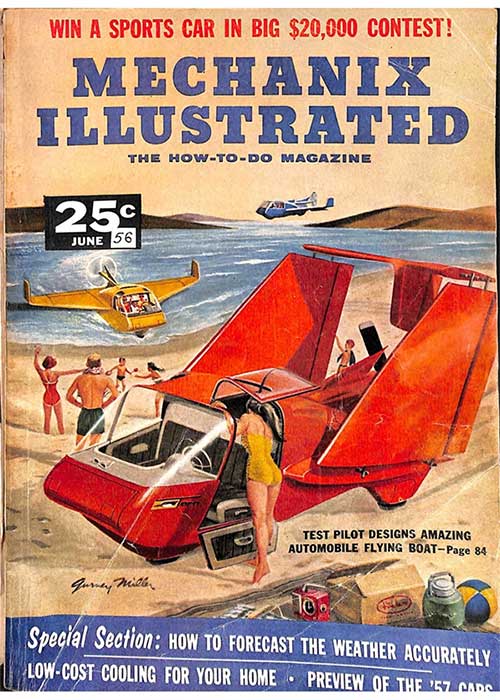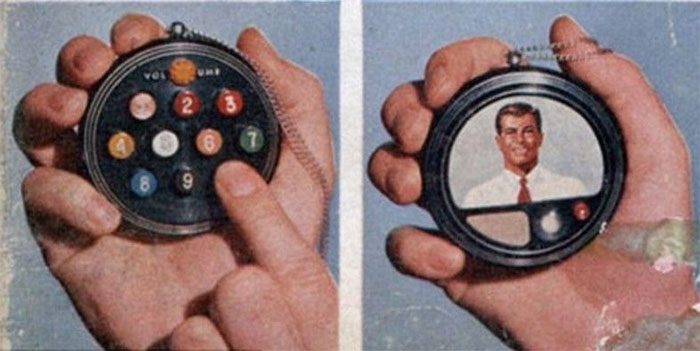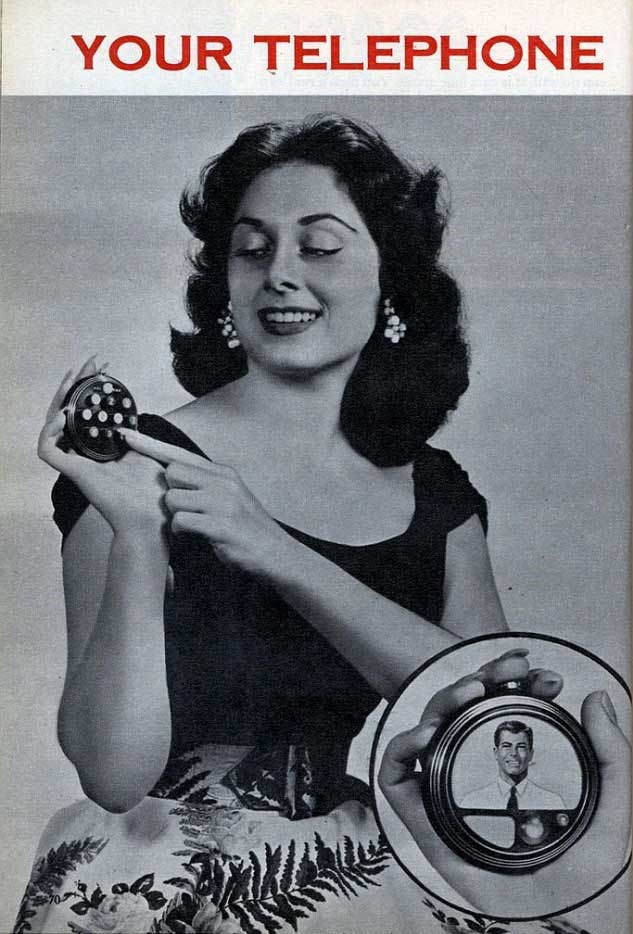The 1950s was an intriguing era marked by rapid technological advancements and continuous innovations. In fact, numerous groundbreaking technological inventions were patented during this time, many of which are essential to our daily lives today. This led people to dream about the possibilities technology would bring at the dawn of the new millennium.
If you were a technology enthusiast back then, the best source of information was an illustrated magazine called Mechanix Illustrated, which published its first issue in 1928 and its last issue in 2001.
This magazine served as inspiration for many writers and filmmakers in the science fiction genre. Many concepts you may have seen in films like Back to the Future (1985–1990) were inspired by ideas and illustrations created by contemporary engineers who published their work in this magazine.

Mechanix Illustrated magazine.
Engineers were simply ahead of their time; their ideas and concepts were so advanced that the technology of the era could not yet realize them, or if it could, the costs were prohibitively high. They envisioned everything from future cars powered solely by electricity to flat-screen televisions.
Interestingly, some of these ideas closely resemble the technology we have today, one of which is the smartphone, first presented in a magazine issue from 1956. As you can see in the illustration below, this phone was compact for portability and featured a touchscreen as well as a camera.

Some engineer ideas from that era closely resemble today’s technology.
The original idea was to wear the phone like a necklace, which is why it was designed in the shape of a stopwatch with a necklace attached to it.
Even in the 1950s, it was understood that telecommunications would be the future of the 21st century. In the past, it was believed that we would be using phones continuously today. And in fact, this has proven to be entirely true; today, many people rely on their smartphones so heavily that their lives seem impossible without them.
The author behind the article introducing this future phone was Robert Beanson, who noted that this phone would feature capabilities such as voice recognition and a color display—concepts that were unbelievable and unheard of at that time.

This phone would feature capabilities like voice recognition and a color display.
This idea came to Beanson during an interview with Harold Osbourne, an engineer from American Telephone and Telegraph, who attempted to predict what phones would look like in the 21st century. An interesting prediction made by Osbourne was that every person would receive a phone number at birth that they would use throughout their lives, and this number would even indicate whether the person was alive or deceased.
|
In 1867, inventor Alexander Graham Bell was granted a patent for the first telephone. This was a bulky device with a large mouthpiece and earpiece connected by wires to a communication unit. It looked drastically different from today’s smartphones. In the 1930s, famous industrial designer Henry Dreyfuss created a device that everyone regarded as the first modern telephone. This device was called Model 302. It had a much more advanced design compared to its predecessors, with the bell integrated inside rather than being a separate component. The speaker and microphone were combined into one part of the phone. By the 1960s, telephones had become even smaller. The Grillo Cricket, designed by Italian designers Marco Zanuso and Richard Sapper, could even fold, representing a significant departure from contemporary models. The shell-like shape of this phone inspired manufacturers to create modern flip phone designs. Throughout the 1980s, telephones gradually transitioned to wireless designs. The iPhone, launched in 2007, completely transformed the concept of a phone by turning it into a compact mobile computer. Although touchscreen phones had existed prior, the iPhone’s user interface and sleek design sparked a revolution in mobile phone design. |





















































